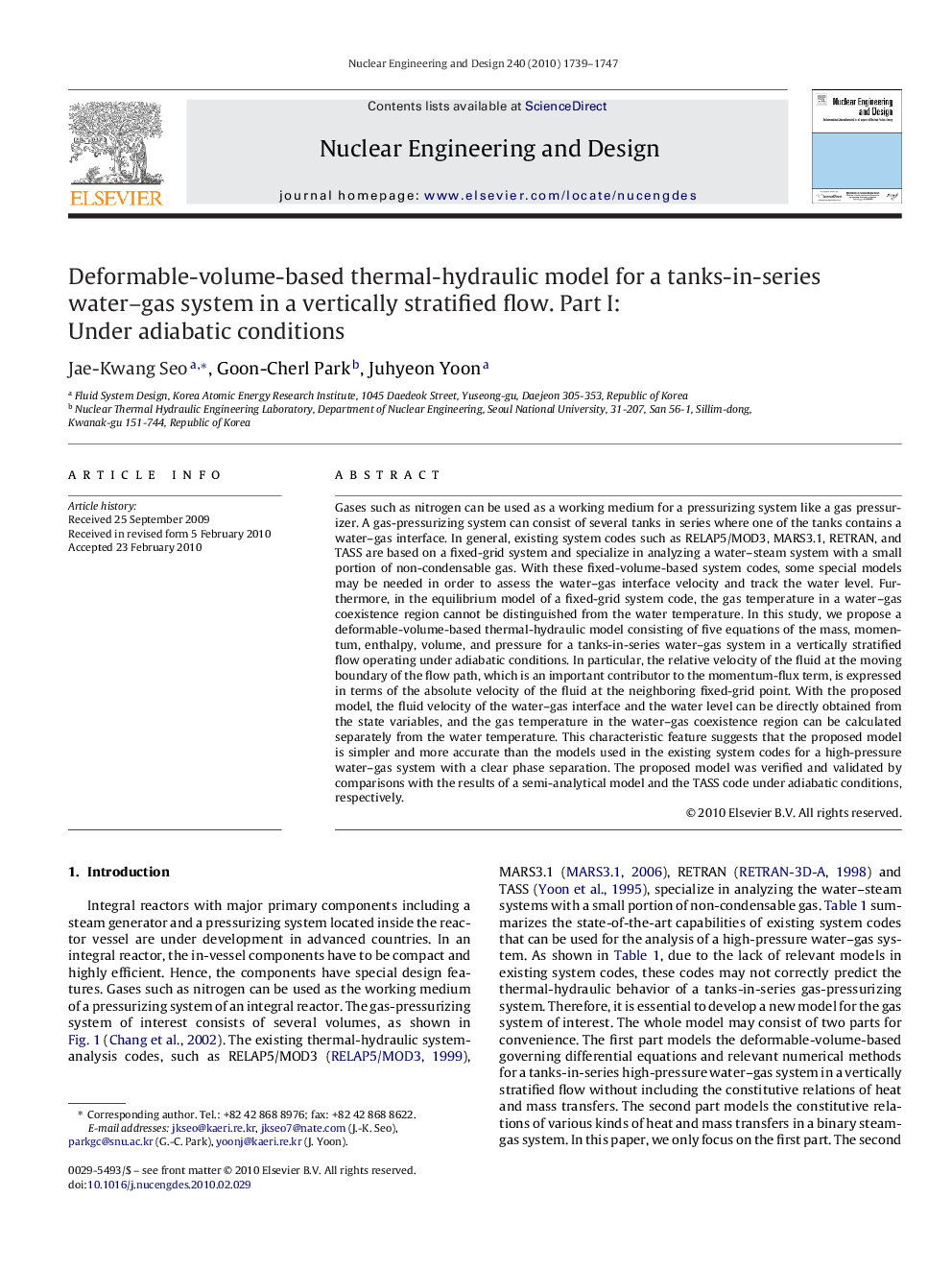| کد مقاله | کد نشریه | سال انتشار | مقاله انگلیسی | نسخه تمام متن |
|---|---|---|---|---|
| 298180 | 511778 | 2010 | 9 صفحه PDF | دانلود رایگان |

Gases such as nitrogen can be used as a working medium for a pressurizing system like a gas pressurizer. A gas-pressurizing system can consist of several tanks in series where one of the tanks contains a water–gas interface. In general, existing system codes such as RELAP5/MOD3, MARS3.1, RETRAN, and TASS are based on a fixed-grid system and specialize in analyzing a water–steam system with a small portion of non-condensable gas. With these fixed-volume-based system codes, some special models may be needed in order to assess the water–gas interface velocity and track the water level. Furthermore, in the equilibrium model of a fixed-grid system code, the gas temperature in a water–gas coexistence region cannot be distinguished from the water temperature. In this study, we propose a deformable-volume-based thermal-hydraulic model consisting of five equations of the mass, momentum, enthalpy, volume, and pressure for a tanks-in-series water–gas system in a vertically stratified flow operating under adiabatic conditions. In particular, the relative velocity of the fluid at the moving boundary of the flow path, which is an important contributor to the momentum-flux term, is expressed in terms of the absolute velocity of the fluid at the neighboring fixed-grid point. With the proposed model, the fluid velocity of the water–gas interface and the water level can be directly obtained from the state variables, and the gas temperature in the water–gas coexistence region can be calculated separately from the water temperature. This characteristic feature suggests that the proposed model is simpler and more accurate than the models used in the existing system codes for a high-pressure water–gas system with a clear phase separation. The proposed model was verified and validated by comparisons with the results of a semi-analytical model and the TASS code under adiabatic conditions, respectively.
Journal: Nuclear Engineering and Design - Volume 240, Issue 7, July 2010, Pages 1739–1747